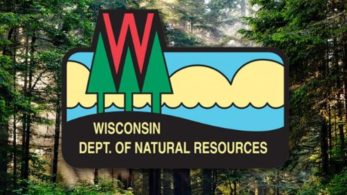Enjoy And Help Care For State Natural Areas This Winter
Decade Of Growth Safeguards More Rare Wildlife And Habitats

Van Vliet Hemlocks in Vilas County is among new State Natural Areas acquired over the last decade.Photo credit: Thomas Meyer
Contact(s): Thomas Meyer, Conservation Biologist, 608-266-0394, Thomas.meyer@wisconsin.gov OR Jared Urban, SNA Volunteer Program Coordinator, 608-228-4349, jared.urban@wisconsin.gov
MADISON, Wis. – Winter is a great time to explore and help care for the State Natural Areas that belong to all Wisconsinites. There are more opportunities to do both in 2020 thanks to expansions of these sites over the past decade and increased staff and volunteer capacity to manage them.
“Now is a great time to get out and enjoy these special places,” said Drew Feldkirchner, who leads the Wisconsin Department of Natural Resources Natural Heritage Conservation Program staff who care for State Natural Areas (SNAs). “Explore on your own on snowshoes or join us for a volunteer workday at a site near you. Come see for yourself why volunteers say the exercise, camaraderie and beautiful views at these workdays are a great way to start the new year.”
In the last decade, the number of State Natural Areas grew from 602 to 692 and from 348,000 to 404,000 acres. They constitute about 1% of the 34.7 million acres in Wisconsin. Some natural areas were new designations on existing state properties, while others were new land acquisitions or donations.
Although the DNR holds more than half of these sites in trust for Wisconsinites, the U.S. Forest Service, The Nature Conservancy, and more than 50 other partners own and manage sites under a system established in 1951 that was spurred by Aldo Leopold and other Wisconsin conservation giants.
State Natural Areas are identified to conserve the best of Wisconsin prairies, forests, wetlands and other habitats that provide support for 90% of rare plant species and 75% of rare wildlife species. Nearly all properties are open to the public to enjoy while bird watching, hiking, hunting and fishing. However, most SNAs are largely undeveloped and do not have restrooms, trails and other facilities like state parks do.
Visit the DNR State Natural Areas webpages to find listings by county and interactive lists highlighting sites to explore for “Big Trees & Old Growth Forests” and “Scenic Vistas & Geological Wonders” and more.
Beefed up Work Crews, Volunteer Opportunities Boost Invasive Species Control on Natural Areas
Increased grant funding over the last decade has beefed up property management crews throughout Wisconsin to help manage State Natural Areas. In turn, crew members have fought invasive species using prescribed fire and other land management activities on a greater number of acres. Northwestern Wisconsin got its first crew members, strengthening the program’s ability to detect and control invasive species before they can take a firm hold of a site, which is critical, Feldkirchner said.

Winter is a great time to strap on snowshoes to explore State Natural Areas, like Fern Dell Gorge in Sauk County.Photo credit: Ryder S. Will
The State Natural Areas volunteer program also has helped increase the number of sites getting needed invasive species control. By 2019, 34 volunteer groups were helping at 45 State Natural Areas, benefitting thousands of acres every year.
Morning workdays, mostly on Saturdays, are scheduled at many sites. Volunteers need no training and are provided equipment on site.
“We have volunteer groups stepping up all over the state to care for Wisconsin’s State Natural Areas, and these winter volunteer workdays are a great way to get involved,” said Jared Urban, who coordinates the SNA Volunteer Program.
People can see a list of workdays and sign up to receive email notices for them on the DNR website here.
You may also like
-
Mark Your Calendars For Free Fun Weekend
-
Find Your Next Outdoor Adventure In Wisconsin During Free Fun Weekend, June 7-8
-
Free Fishing Weekend in Wisconsin June 7-8
-
Wear A Life Jacket, Boat Responsibly This Holiday Weekend
-
Preserve Wisconsin’s legacy: Renew the Knowles-Nelson Stewardship Program | Opinion
